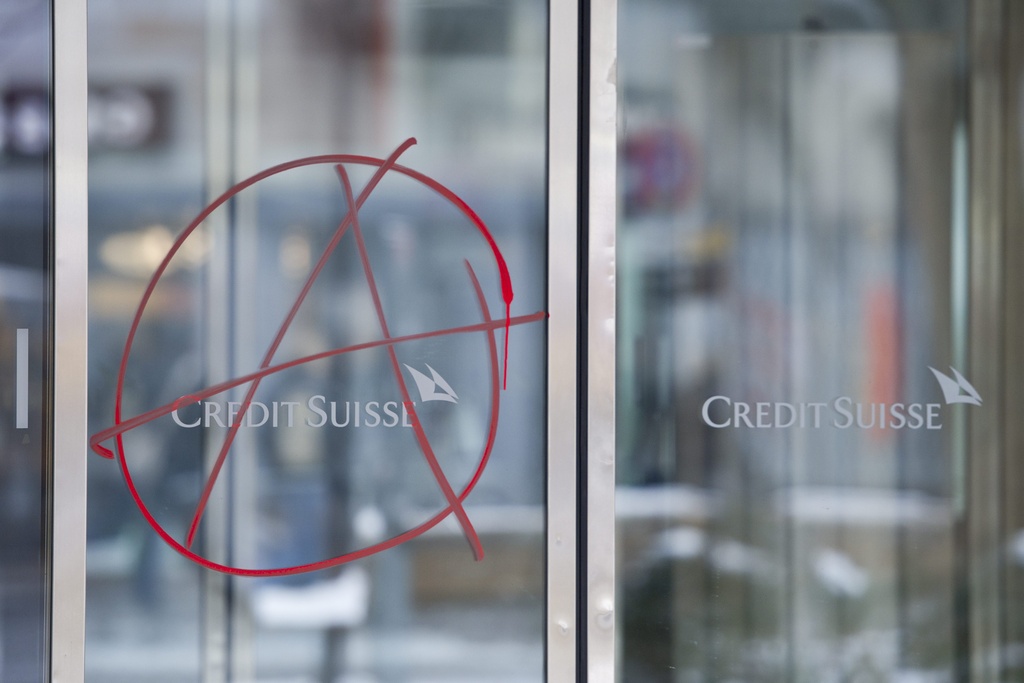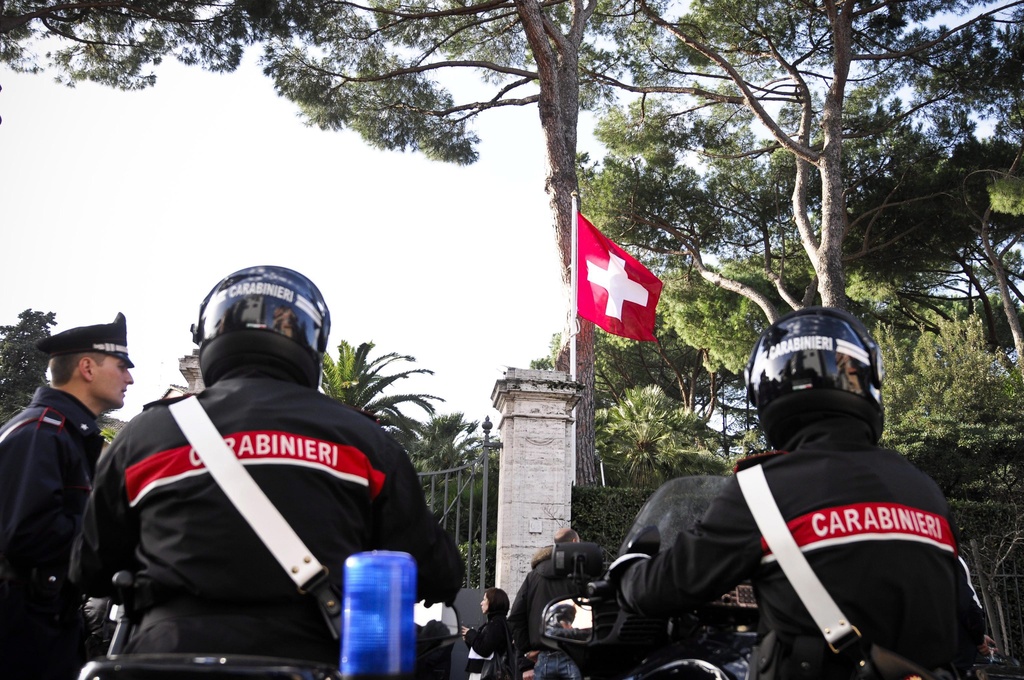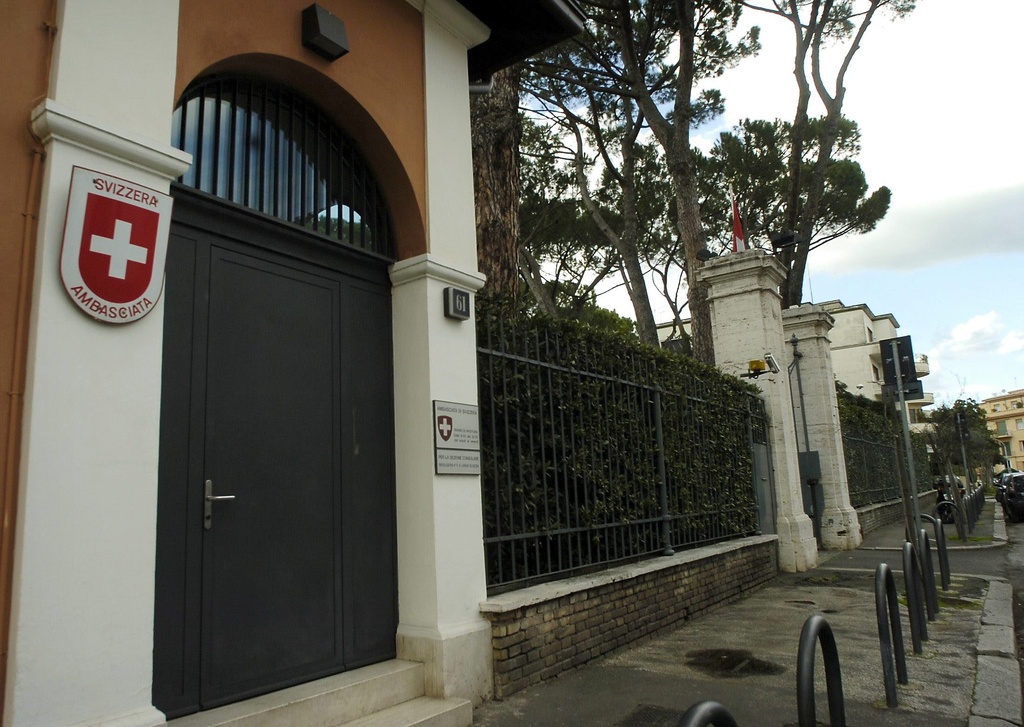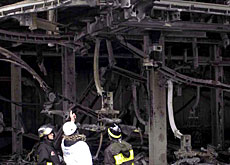Violent anarchist groups go global

A series of letter bombings and failed attacks over the past year point to the evolving threat posed by anarchist groups. Switzerland is particularly exposed.
The group of anarchists from Italy believed to be behind the attacks are connected to three alleged eco-terrorists in detention in Switzerland.
The most recent attack involved a letter bomb sent to the office of the Swiss nuclear power lobby organisation at the end of March.
The Federal Prosecutor’s Office said it believed the group responsible was the same one behind last year’s foiled bombing of the IBM research centre outside Zurich, and the letter bombs sent to the Swiss and Chilean embassies in Rome last December, which injured three people.
These attacks and others have been claimed by the Informal Anarchist Federation (FAI), not to be confused with the Italian Anarchist Federation (also FAI). The former first appeared on the scene in 2003 when it sent a series of parcel bombs to various politicians and European institutions. Italy’s anti-terrorism experts have called it a body without a head.
But why is Switzerland a target? When claiming responsibility for the attacks over the past 12 months, FAI expressed its solidarity with the three persons – two Italians and one Swiss-Italian – currently in pre-trial detention in connection with the planned attack on the IBM centre.
The three were caught in possession of 476 grammes of explosives and other components needed to build an improvised explosive device (IED) which they were suspected of wanting to use against the centre’s nanotechnology centre, then under construction. Also found in the car were 31 letters written in German and claiming responsibility for the attack in the name of a group calling itself ELF Switzerland Earth Liberation Front.
Il Silvestre
The three in prison have been linked to the eco-terrorist movement, Il Silvestre, which came into existence about ten years ago in Pisa. Il Silvestre is considered among the most extreme and active groups of its kind. The group has as one of its reference points a Swiss eco-terrorist, Marco Camenisch.
Now aged 59, Camenisch received substantial sentences both in Switzerland and in Italy for sabotaging electricity facilities in a protest against nuclear energy from the late 1970s.
In Switzerland, he was sentenced in 2004 to 17 years in prison for the murder of a Swiss border guard in 1989. In a retrial in 2007, this term was halved to eight years. He is still detained in Switzerland.
The two Italians arrested in the past couple of years were thought by Italian investigators to have been behind the blowing up of a ski lift facility in the Tuscan resort of Abetone on January 21, 2004 – Camenisch’s birthday.
A report published in 2010 by the Italian authorities on the security situation in the country emphasised that the kind of acts carried out by these “insurrectional anarchists” appear to be evolving.
“The modus operandi of this fringe remains classical – involving direct acts and campaigns of intimidation against objectives connected to ‘repression’… Compared to the past, however, there is evidence of a greater tendency towards a ‘personalisation’ of the threats and the international dimension of the struggle,” the report stated.
This evolution has been confirmed by the European Police Office, Europol. According to Europol’s report, there has been an increasing number of terrorist attacks attributed to extreme leftwing or anarchist groups. There were 40 such incidents reported in 2009, a 43 per cent rise over the previous year and double the number in 2007.
There were 254 cases involving the extreme leftwing in Switzerland in 2010, according to a report published by Swiss police on Monday. That was 34 more than in 2009.
Organised movement
“There exists in Europe an organised anarchist movement that manifests itself in the various anarchist federations in different countries,” explained Peter Schrembs, of the anarchist group Carlo Vanza Circle in Locarno, southern Switzerland.
Schrembs says there are a myriad of activist groups with varying interests in each country.
Schremps admits that historically, anarchists faced with situations they believed were unacceptable resorted to violence. But this, he says, is not only a characteristic of anarchists.
“Taking direct action means to us setting up cooperatives, taking over management of projects and raising awareness of certain problems,” he said, rejecting the idea that injuring someone – as happened in the Rome embassy bombings – would sensitise people to a cause.
The Italian Anarchist Federation has also distanced itself from violence, saying these kind of provocations would only lead to the criminalisation of dissent. Numerous websites of radical leftwing groups go as far as accusing the FAI of being used by the secret services to discredit the anarchists.
Whatever the case, many websites of radical leftwing and other extremist groups have expressed their solidarity with the three imprisoned anarchists and others serving time.
In Switzerland, letters from the three as well as Camenisch have been translated into French by a group of squatters in Lausanne while the organisation considered the most violent leftwing group in Switzerland, RAS, honoured the four “political prisoners” during its May 1 march.
The Swiss intelligence report said there were about 2,000 extremists in Switzerland – half of them violent. The police said the potential for violence remained high, especially since the group which claimed responsibility for the embassy bombing in Rome said it intended to “raise the bar”.
April 15, 2010: Two Italians and a Swiss-Italian are arrested when Swiss police find explosives in their car. They are suspected of wanting to blow up the IBM research centre outside Zurich.
The Swiss prosecutor files charges against the three at the Federal Criminal Court in Bellinzona on May 6 2011. The Federal Prosecutor’s Office has not indicated when the trial might open.
December 23, 2010: A pair of parcel bombs explode at the Swiss and Chilean embassies in Rome within hours of each other.
March 31, 2011: A letter bomb is sent to the office of the Swiss nuclear power lobby in Olten. Police said it contained a very powerful explosive. Two people suffered minor injuries.
The Federal Prosecutor’s Office said two similar attacks were carried out the same week in Italy and Greece.
(Adapted from Italian by Dale Bechtel)

In compliance with the JTI standards
More: SWI swissinfo.ch certified by the Journalism Trust Initiative






You can find an overview of ongoing debates with our journalists here. Please join us!
If you want to start a conversation about a topic raised in this article or want to report factual errors, email us at english@swissinfo.ch.